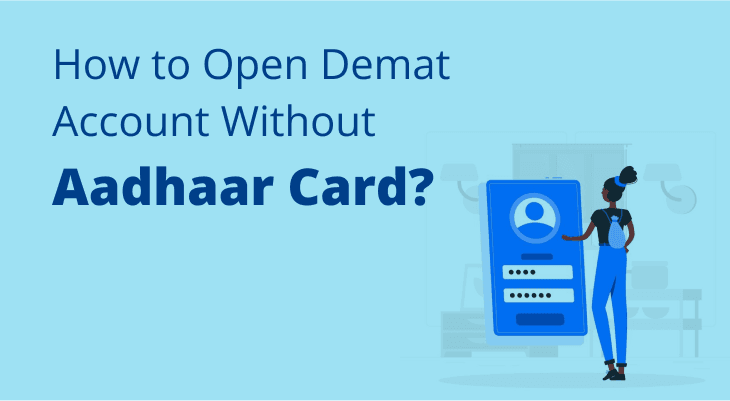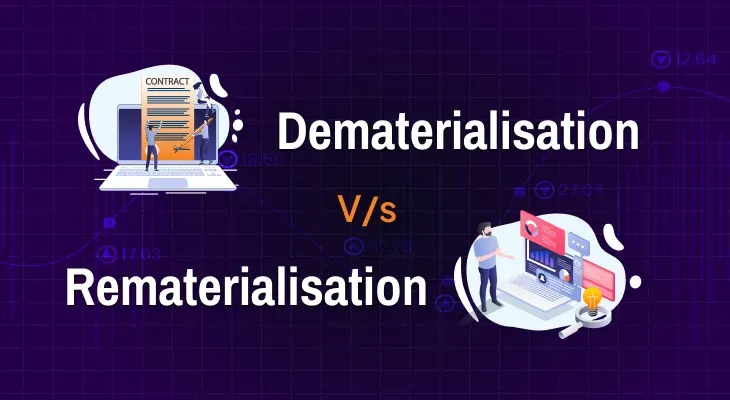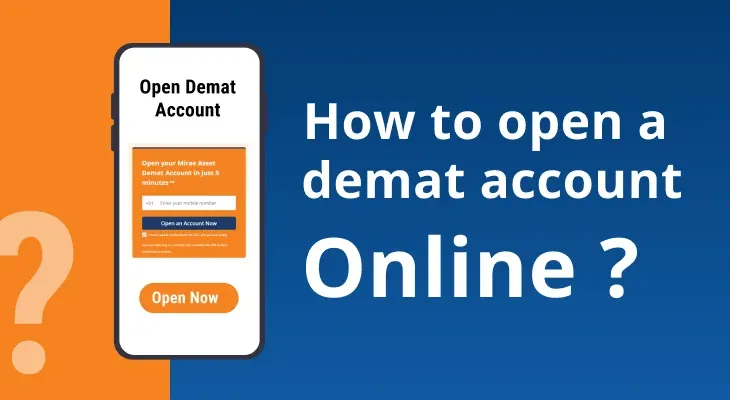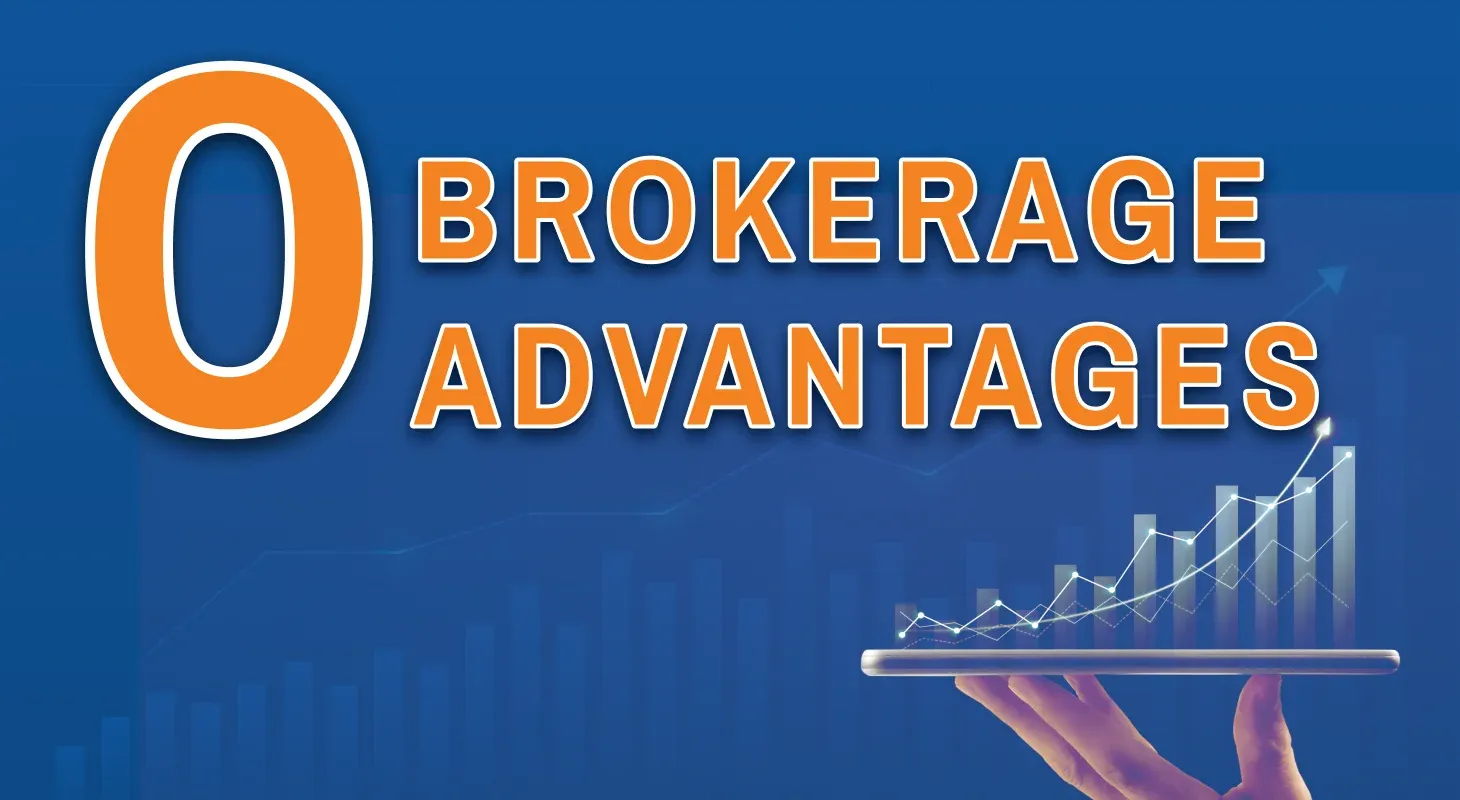
How to Open Demat Account Without Aadhaar Card?
A demat account is a type of account that allows investors to hold their shares and securities in an electronic format. A demat account is linked to a trading account and a bank account, which enable the investors to buy and sell shares and receive or pay money respectively. A demat account eliminates the need for physical certificates and reduces the risk of theft, loss, or damage of the documents. A demat account also offers convenience, security, and lower transaction costs for the investors.
Why Open a Demat Account?
Opening a demat account is essential for anyone who wants to invest in the stock market, as it is mandatory to have a demat account for trading in most of the exchanges in India. Opening a demat account also offers several benefits for the investors, such as:
Easy and quick access to the portfolio and transactions online or through mobile apps.
Reduced paperwork and hassle-free transfer of shares and securities.
Automatic credit of dividends, bonus, and other corporate actions to the account.
Nomination facility to appoint a beneficiary in case of death or disability of the account holder.
Facility to pledge or hypothecate the securities as collateral for loans.
Open A Demat Account without Aadhaar Card
Aadhaar card is a 12-digit unique identification number issued by the Indian government to every resident of India, which serves as a proof of identity and address. Aadhaar card is one of the documents required for opening a demat account, as per the guidelines of the Securities and Exchange Board of India (SEBI). However, there may be some cases where an investor wants to proceed with demat account opening without an Aadhaar card or does not have an Aadhaar card or does not want to share it with the depository participant (DP) or the broker.
In such cases, the investor can still open a demat account without Aadhaar card, by following these steps:
Choose a DP or a broker that offers the facility of opening a demat account without Aadhaar card.
Fill up the account opening form and provide the alternative documents for identity and address proof, such as PAN card, passport, voter ID card, driving licence, bank statement, etc.
Submit the account opening form along with the self-attested copies of the documents and a passport size photograph to the DP or the broker.
Complete the in-person verification (IPV) process, where the DP or the broker will verify the original documents and the identity of the investor.
Once the IPV is done, the DP or the broker will activate the demat account and provide the login credentials to the investor. You can now operate demat without Aadhaar.
How to Open a Demat Account?
Opening a demat account is a simple and easy process, which can be done online or offline, depending on the preference of the investor. The general steps for opening a demat account are as follows:
Select a DP or a broker that suits the needs and preferences of the investor. The investor can compare the charges, services, and features of different DPs or brokers before choosing one.
Visit the website of the DP or the broker and fill up the online account opening form, or download the form and print it.
Provide the necessary details and documents for KYC (know your customer) verification, such as name, date of birth, PAN card, Aadhaar card (or alternative documents), bank account details, etc.
Upload the scanned copies of the documents and the photograph, or send them by courier or post to the DP or the broker.
Complete the e-signature process using Aadhaar-based OTP (one-time password) or digital signature, or sign the physical form and send it to the DP or the broker.
Complete the IPV process through video call or physical visit, where the DP or the broker will verify the documents and the identity of the investor.
Once the verification is done, the DP or the broker will activate the demat account and provide the login credentials to the investor.
The investor can then access the demat account online or through mobile app and start trading in the stock market.
Wrapping Up
It's is possible to open a Demat account without Aadhaar card, but it requires more documents and verification steps. Aadhaar card is a convenient and secure way to link your identity and address with your Demat account. It also offers benefits such as faster KYC, easier transfer of securities, and compliance with regulations. Therefore, it is advisable to link your Aadhaar card with your Demat account if you have one.
FAQ
What is a Demat account and why do I need one?
A Demat account is an electronic account that holds your securities, such as shares, bonds, and mutual funds, in a digital format. You need a Demat account to trade in the stock market, apply for IPOs, or invest in other financial instruments.
What are the documents required to open a Demat account without Aadhaar card?
The only mandatory document to open a Demat account is your PAN card. However, you also need to provide other documents as proof of identity and address, such as passport, voter ID, driving licence, utility bills, ration card, etc. You also need to submit proof of income, such as bank statements, salary slips, or income tax returns.
How can I open a Demat account online without Aadhaar card?
You can open a Demat account online without Aadhaar card by following these steps:
Visit the website of a brokerage firm or depository participant (DP) of your choice and fill out the application form.
Provide your personal and bank details and upload the scanned copies of your documents.
Complete the in-person verification (IPV) through video call or webcam.
Choose a suitable plan and pay the account opening charges.
Sign the application form electronically using your OTP or digital signature.
Receive your login credentials and welcome kit through email.
What are the benefits of linking Aadhaar card with Demat account?
Linking Aadhaar card with Demat account has the following benefits:
It simplifies the KYC process and reduces the paperwork involved.
It prevents fraud and money laundering by verifying your identity and address.
It enables seamless transfer of securities and dividends to your account.
It helps you comply with the regulatory norms and avoid account deactivation
How can I check if my Demat account is linked with Aadhaar card?
You can check if your Demat account is linked with Aadhaar card by following these steps:
Visit the UIDAI website and click on 'Check Aadhaar/Bank Account Linking Status'.
Enter your 12-digit Aadhaar number and captcha code and click on 'Send OTP'.
Enter the OTP received on your registered mobile number and click on 'Login'.
View the list of accounts, including your Demat account, linked with your Aadhaar card.


